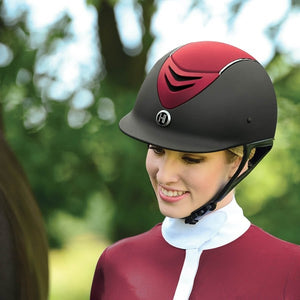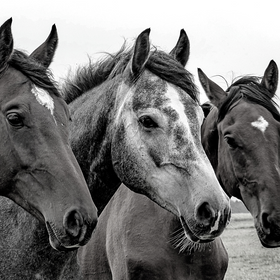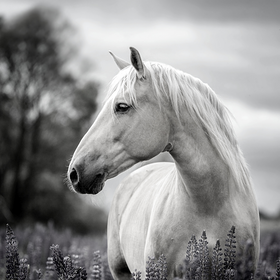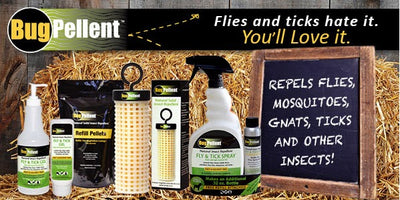
Founder in Horses - Know The Warning Signs this Spring
Springtime comes with many wonderful things, but with it, we also see an increased risk of laminitis also known as founder in our horses. Founder is a serious condition and is one of the most common reasons for lameness in ponies and horses. It is a very painful issue for horses. Prevention and early identification and treatment are key for founder cases. If cases are left untreated for too long, they will become irreversible.
Founder can occur in any and sometimes all feet, but is most common in the front as this area carries the most weight. Lack of blood flow in the laminae in the feet produces swelling and inflammation within the hoof. If this inflammation goes too long undetected, the laminae will start to die causing extreme pain. As the laminae die, the pedal bone will lose support and begin to drop and rotate within the hoof capsule.
Risk Factors
Unfortunately, we see an increase in cases of laminitis in the spring. The main reason for this is most horses are going back to grazing after long months on a hay and concentrate diet. The sudden increase in sugar (mainly from young grass) is a major contributing factor for laminitis. One of the other leading causes of laminitis is obesity.
Other contributing factors include:
- Feeding your horse large amounts of soluble carbohydrates (young grass)
- High fever or illness causing equine metabolic syndrome
- Severe colic
- Severe stress
- Some infections
- Working too fast or hard for long periods of time
- Cushing’s Disease
- Black walnut shavings in bedding
- Some breeds are more prone
Identification
Early identification of laminitis can make a big difference in your horse’s successful recovery. There are a few things to watch for that could indicate early-stage laminitis. If you see any of these signs in your horse, you should contact your veterinarian immediately.
- Sudden lameness
- Reluctance to walk
- Pulse felt in the foot
- Alternating weight from leg to leg
- Warm foot
- Laying down more often than normal
- Obvious pain when standing
- Camping out - Standing with front legs out in front of them
- Standing with both front and rear legs under their body
Treatment for Laminitis
There are several types of therapies that are generally combined for laminitic horses. The first step is to try to reduce the inflammation in the hoof(s) with a nonsteroidal anti-inflammatory. This will also help with pain management. Cold hosing or having your horse stand in ice water can also reduce inflammation. Horses with laminitis are put on complete stall rest.
Farriers can be consulted, in conjunction with your veterinarian, for laminitis. Farriers can provide your horse with additional support with heel wedges and foam support. This can help reduce some of the strain the pedal bone is experiencing during the inflammatory period.
Prevention Tips
While laminitis is not always preventable, there are a few prevention tips for horse owners.
Identify high-risk horses - horses with metabolic disorders are more prone to laminitis. Many people classify these horses as the “easy keepers” and they tend to be overweight. Veterinarians can test for a variety of metabolic disorders with a simple blood test if your horse fits the profile for a metabolic disorder.
Minimize sugars in the diet - while it feels wonderful to give your horse sweet feeds, this may trigger laminitis (especially in high-risk horses). You’ll want to limit or entirely eliminate concentrates, especially if your horse is overweight. There are low-sugar concentrates available for high-risk horses. If your horse does need a concentrate, consider one of these alternatives.
Limit lush pasture - limit your horse’s access to lush pasture. Grass, especially young grass, is very rich in a sugar called fructan, which is one of the leading causes of laminitis. Fructan levels tend to peak in the spring as the grass begins to grow. Deciding how much to limit your horse’s access is very dependent on the specific horse. Grazing muzzles can help reduce the intake as well. Contact your veterinarian to help develop a schedule specifically for your horse.





